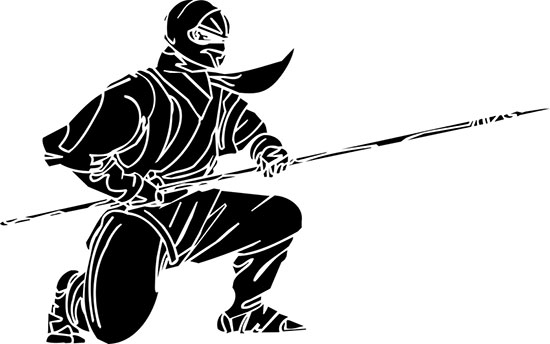Breathing is a fundamental aspect of life, and samurai warriors, known for their strength and discipline, understood the importance of proper breathing techniques in martial arts.
We’ll explore the fascinating world of samurai breathing techniques, delving into their history, importance, and benefits, while also providing practical advice on incorporating these practices into your daily life.
Contents
History of Samurai Breathing Techniques
Breathing techniques have long been an integral part of martial arts training. The samurai recognized that mastering breath control could provide physical and mental advantages in combat.
As a result, they developed and honed specific breathing techniques to enhance their performance on the battlefield.
The Importance of Breathing in Samurai Training
Physical Benefits
Proper breath control is essential for optimal physical performance. By mastering breathing techniques, samurai warriors were able to increase their endurance, strength, and agility. Efficient oxygen utilization also helped them to recover more quickly after intense exertion.
Mental Benefits
Breathing techniques play a crucial role in mental clarity and focus. Samurai warriors understood that controlled breathing could calm their minds and improve their decision-making abilities in high-pressure situations.
By practicing these techniques, they were able to achieve a heightened state of mental awareness and concentration.
Samurai Breathing Techniques
Diaphragmatic Breathing
Diaphragmatic breathing, also known as deep belly breathing, involves inhaling deeply to fill the lungs and expand the diaphragm.
This technique allows for greater oxygen intake and promotes relaxation. To practice, place one hand on your chest and the other on your abdomen, then inhale deeply through your nose, feeling your diaphragm expand as you breathe.
Box Breathing
Box breathing, or square breathing, is a technique that involves inhaling, holding the breath, exhaling, and pausing for an equal count.
This method helps to regulate the breath and maintain a calm, focused state. To practice, inhale for a count of four, hold for a count of four, exhale for a count of four, and pause for a count of four.
Sanchin Breathing
Sanchin breathing is a technique derived from Okinawan karate that emphasizes the connection between breath and movement.
Practitioners inhale deeply through the nose while tensing the muscles, then exhale forcefully through the mouth while relaxing the muscles.
This technique strengthens the diaphragm and develops core stability. To practice, inhale deeply and tense your muscles as you perform a slow, controlled movement, then exhale forcefully as you relax your muscles and complete the movement.
Reverse Breathing
Reverse breathing is an advanced technique that involves inhaling while contracting the abdomen and exhaling while expanding the abdomen.
This method increases the internal pressure and can heighten mental focus. To practice, contract your abdominal muscles as you inhale through your nose, then relax and expand your abdomen as you exhale through your mouth.
How to Practice Samurai Breathing Techniques
Tips for Beginners
When starting out with samurai breathing techniques, it’s essential to be patient and consistent. Begin by choosing one technique and practicing it for a few minutes each day, gradually increasing the duration as you become more comfortable.
It’s also important to practice in a quiet, distraction-free environment to enhance your focus and awareness.
Developing a Routine
Incorporating samurai breathing techniques into your daily routine can help to solidify the practice and make it a natural part of your life.
Consider setting aside time each day, such as in the morning or before bed, to practice your chosen technique.
You may also find it beneficial to practice these techniques before engaging in physical activity or when you need a moment of mental clarity.
Benefits of Samurai Breathing Techniques
Samurai breathing techniques can lead to increased endurance, strength, and agility. By practicing these techniques regularly, you can enhance your oxygen utilization and optimize your physical performance in various activities, from martial arts to everyday tasks.
By training your mind to remain calm and focused under pressure, you can improve your decision-making abilities and overall mental clarity.
Also, by focusing on your breath, you can quiet your mind and let go of external distractions, allowing you to experience a sense of calm and tranquility.
Samurai breathing techniques foster a greater connection between your mind and body. By learning to control your breath, you can enhance your self-awareness and become more in tune with your body’s needs and sensations.
Applying Samurai Breathing Techniques in Everyday Life
Samurai breathing techniques aren’t just for warriors; they can be beneficial to anyone seeking to improve their physical and mental well-being.
By incorporating these practices into your daily life, you can reap the rewards of increased focus, reduced stress, and a stronger mind-body connection.
Whether you’re an athlete, a busy professional, or simply someone looking for a new way to relax, samurai breathing techniques can offer a valuable tool for personal growth and self-improvement.
Conclusion
The ancient art of samurai breathing techniques offers valuable lessons in self-mastery and discipline.
By learning and practicing these techniques, you can unlock the secrets of the warrior’s breath and enjoy the physical and mental benefits that come with enhanced breath control.
So, why not give it a try and experience the transformative power of samurai breathing techniques for yourself?





